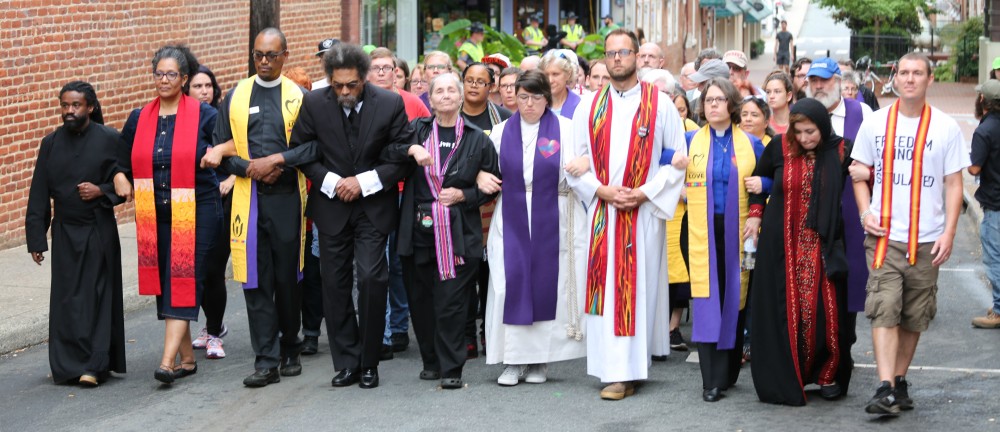Faith leaders on the front lines in Charlottesville
An interfaith group of clergy gathered alongside anti-racist and anti-fascist activists countering white supremacist and neo-Nazi protesters.

What happened in Charlottesville, Virginia, on August 11–12 drew a strong response from local faith leaders, but it was “not just a local moment,” said Seth Wispelwey, an organizer of clergy efforts when white nationalists and neo-Nazis rallied in his hometown.
“White supremacy is woven into our country’s DNA,” he said in comments on the event gathered by the National Council of Churches. In efforts to counter racism, “the white church must help lead.”
An interfaith group of hundreds of clergy gathered alongside Black Lives Matter activists and other antiracist and antifascist groups resisting the white supremacist efforts. Churches also provided care for those harmed by the day’s violence, which included a man driving his car into the counterprotesters, killing one woman and injuring dozens. Two state police officers monitoring the rally died in a helicopter crash.




